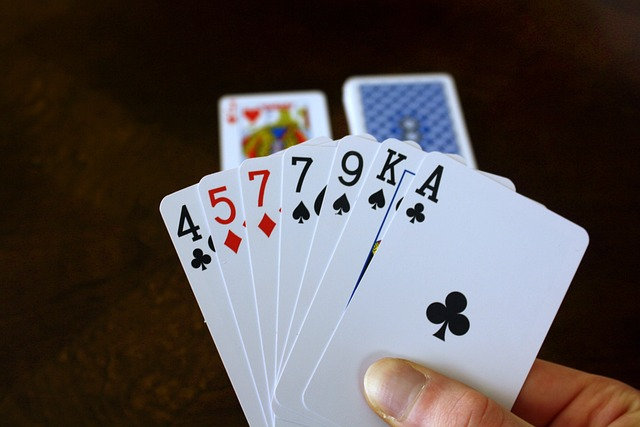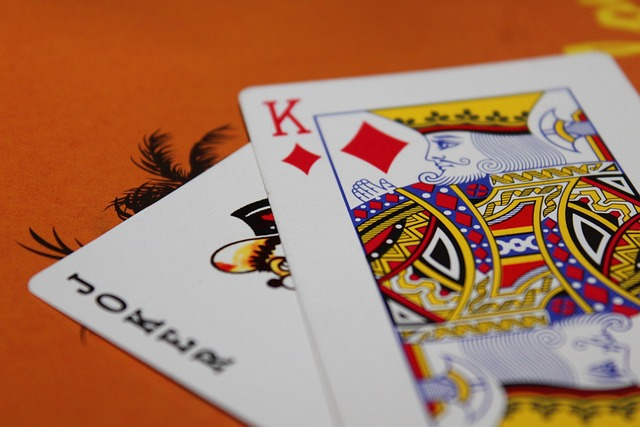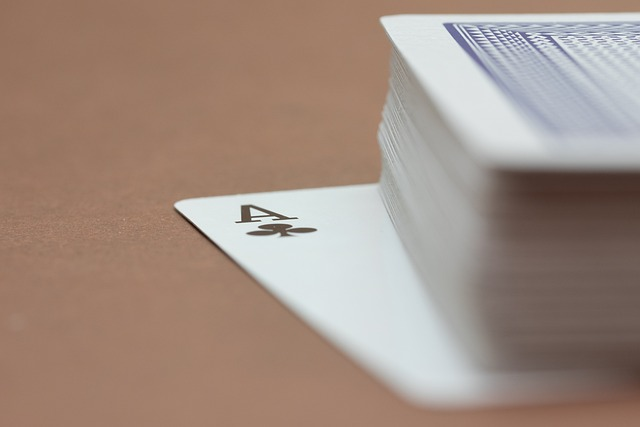Did you know? Rummy is said to have evolved from various forms of matching-card games played in Mexico and China.
Rummy is one of the most popular card games across the globe. Here, you strive to improve the hand you are dealt by drawing and discarding cards as the game progresses. It needs a combination of skills and strategy to win the game.
You can play rummy with two or more players, and each player is dealt 13 cards as soon as the game begins. Once you learn the rules and gameplay, it becomes exciting as each move becomes a well-thought-out strategy.
So, do you want to learn how to play rummy? Read this mini guide till the end to know all about it.
Table of Contents
Rummy Game: Overview
Rummy is a popular card game played with 2 or more players. The objective is to form sets of matching cards in runs of consecutive numbers or groups of the same rank. Each player is dealt a hand of cards and must strategically draw and discard to create melds.
Rummy is a game that needs keen observation, memory, and decision-making skills. The game has been around for ages, and today, you will also find online rummy platforms to help you indulge in the game whenever you feel like it.
Playing rummy is entertaining and provides cognitive benefits as the game involves strategic thinking and pattern recognition. It is an enjoyable way to keep the brain sharp and active. It’s a fun and stimulating activity for players of all ages.
Common Rummy Game Terminologies
Let’s understand some of the most common rummy game terminologies.
- Draw: Pick a card from either the stockpile or the discard pile during your turn.
- Discard: Place a card from your hand onto the discard pile, making it available for the player next to you.
- Declare: Announcing that you have formed valid sets or runs and ending the round. But always make sure you have a valid rummy declaration.
- Show: Displaying your cards to prove that you have a valid hand after declaring.
- Joker: A wildcard, either a card selected randomly at the beginning of the game or a printed joker.
- Pure Sequence: It is a valid run of consecutive cards without the use of a joker.
- Impure Sequence: A run that includes one or more jokers.
- Set: Three or four cards of the same rank form a set.
- Drop: Opting out of the current round when your cards are not very good.
- Middle Drop: Dropping out in the middle of a game is called a middle drop.
- First Drop: Opting out at the beginning of a game is the first drop.
- Full Count: Having all cards in valid sets or runs with zero points leads to a win.
- High Card: Unmatched cards in a player’s hand at the end of a round, contributing to points.
- Invalid Declaration: Incorrectly declaring a winning hand can result in a penalty.
- Closed Deck: The stack of face-down cards from which players draw during their turns.
- Open Deck: The face-up pile of discarded cards from which players can draw. It is also known as a discard pile.
- Show Timeout: The time limit given to a player to declare after drawing a card.
Rummy Rules: How To Play Rummy Game?

Let’s understand how you can play the rummy game based on the basic rules of rummy.
Rank Of Cards
The order of the cards from the highest to lowest is A, K, Q, J, 10, 9, 8, 7, 6, 5, 4, 3, 2, A. Ace can be either the lowest or the highest as per the rummy rules. Ace is powerful because it can be paired with K, Q, or 2, 3 of the same suit to form a pure sequence.
The Deal
In Rummy, you use two decks for 2 to 6 players. For 6 or more players, you use three decks.
As soon as the game starts, each player must draw from the lot to decide on the first dealer. Once that’s done, the dealer deals 13 cards face down to each participant, forming their hand.
The remaining cards become the draw pile, with the top card turned face-up beside it to start the discard pile. The game begins with the player to the dealer’s left drawing a card from the deck or discard pile.
The Objective of the Rummy Game
The objective of Rummy, the traditional card-matching game, is to be the first player to successfully organize and lay down a hand of cards as per the rummy rules. You aim to create melds in a specific combination of sets and runs and make a valid declaration.
A set is a group of three or four cards of the same rank but a different suit. A run is a sequence of three or more consecutive cards of the same suit.
This is achieved by drawing and discarding cards during your turn. It is important to strategically form melds from the cards in your hand. The goal is to keep a low score in rummy.
The Play
In Rummy, players take turns to draw a card from the deck or discard pile and then discard a card to reduce their hand or lower the score. With every move, you aim to create valid melds of sets and runs. You can declare when the hand meets the required criteria. For instance, you can declare if you have arranged all the cards in your hand into sets and runs. This will be the end of the game.
Melding
In Rummy, melds are a set of cards that form a valid hand. They can be divided into a pure sequence, an impure sequence, and a set. One pure sequence of at least 3 cards of the same suit is compulsory to win the game.
Pure Sequence
A pure sequence in rummy is a set of three or more cards of the same suit arranged in a consecutive order. Remember, you cannot use a joker or a wild card to form a pure sequence.
Example: 9♠ 10♠ J♠ Q♠
Impure Sequence
An impure sequence is a set of cards of the same suit arranged in a consecutive order. However, here you can use a wild card or a joker to complete the sequence.
Example: 9♠ 10♠ 8♦ Q♠ (Here, 8♦ is a wild joker and replaces J♠)
Sets
In a rummy card game, a set is a group of three or more cards of the same rank but a different suit. You can also use wild cards or jokers to form a set.
Example: A♥ A♣ A♦
Laying Off
Laying off is a strategy in the rummy card game, which allows players to reduce the number of cards in their hands and minimize points. So here, you can add one or more cards from your hand to any matched set already shown on the table. For example, if three threes are already on the table, a player who holds the fourth three in their hand can lay it off by adding it to the existing set.
Laying off is not mandatory. If you prefer, you can keep all the cards in your hand until your next turn. However, it helps reduce the number of cards in the hand. That said, the rummy rules may differ for laying off as per the platform. So, it’s always best to cross-check the rummy card game rules.
Going Out
In the basic rummy game, the winner is declared when a player discards all their cards. In the final turn, if you have remaining cards from matched sets, you can lay them down without discarding them, concluding the game.
If the last card from the stock is drawn without a player going out, the next player may draw the top discard or turn it over to create a new stock, resuming the game.
Scoring in Rummy
Scoring in rummy is crucial to determining the winner. Players aim to meld their cards into sets or runs to minimize point accumulation. Face cards carry 10 points, aces have 1 or 10 points, and numbered cards retain their face value.
Unmatched cards at the end of a round contribute to a player’s score. Winning leads to zero points. But losing means penalty points for the remaining cards in your hand that are unmatched.
However, you must have a pure sequence in place to ensure all other matched cards, even those with a joker or a set, are considered. The aim of the game is to keep your score as low as possible. The one with the lowest score in the end wins the game.
Joker in Rummy Game

In rummy games, the Joker card plays a crucial role. Here, there are two types of jokers. One is the printed joker from the standard deck of cards, and the other is the wild joker, which is randomly selected at the beginning of the game. The wild joker can be any normal card, such as Q♥.
Remember, you cannot use a joker or a wild card to form a pure sequence. But they help you form impure sequences and even sets.
Drop in Rummy Card Games

Drop is when a player decides to withdraw themselves from that particular round. Once the cards are dealt and it’s your turn to play, you can opt to drop. You can use this as a strategic advantage if you think your cards are not worth playing. Usually, the first drop means you get about 20 penalty points.
If you play a couple of rounds and then want to drop, you end up with double points of the first drop. The last drop and the maximum points for it can be 80.
But the drop points depend on the rules of the game you are playing.
If there are two players and one person chooses to drop the game, the other player automatically wins. However, your cards will remain with you even after you drop and won’t be put in the discard pile.
Other Important Rummy Rules
Now that you know how to play rummy, let’s understand some of the most important rummy rules.
Declaring Rummy
Some variations allow players to declare Rummy when they have formed valid sets and/or runs with their entire hand without discarding them. For instance, you may make valid sets and runs in the first few rounds and declare it once it’s your turn without picking a card from the stock.
First Turn Restrictions
In some rummy games, there are rules regarding the first turn. For instance, it may require a player to have a certain minimum point value in their initial meld.
Consecutive Discards
Most Rummy games prohibit players from discarding a card that they picked up in the same turn, preventing immediate returns to the discard pile.
Wrong Declaration Penalty
Incorrect declaration may result in a penalty; on some platforms, the penalty points may be hefty. So, you must always ensure that your melds are valid before declaring.
Rejoining
In some rummy games, players who dropped out earlier can rejoin in subsequent rounds with a penalty.
Best of Three Rounds
In tournament-style play, participants might engage in a series of rounds, and the player with the lowest cumulative score at the end of the predetermined number of rounds emerges as the overall winner.
Tips To Win The Rummy Game
These rummy tips and strategies will help you win the next rummy game.
Have A Startegy For Melds
Right from the time the cards are dealt, have a strategy in mind. Don’t keep the high-point cards for too long. For instance, if you have Q♥ and K♥. Don’t wait for a J♥ for very long. The aim is to keep your score as low as possible.
Keep An Eye on The Discard Pile
Observing the discard pile helps you understand which cards are less likely to be useful to your opponents. You can then confidently discard these cards and reduce the risk of aiding your opponents in completing their sets or runs.
Also, be mindful of the cards you discard. Avoid giving away crucial information about your hand to opponents.
Utilize Jokers Wisely
Jokers can be game-changers. Use them cleverly in your sets and runs to reduce points and increase your chances of completing your hand. However, before using your jokers, build a pure sequence.
Stay Patient and Calm
Rummy requires a combination of skill and patience. Avoid impulsive decisions and stay calm even if the game is not initially in your favor. Patience often pays off in the long run.
How To Play Rummy Rum Game?
In Rummy Rum, players aim to be the first to achieve 500 net points by forming matched sets and sequences. Using a standard 52-card deck, players are dealt seven cards each, and the game begins by withdrawing cards from the stock or discard pile.
Sets of 3 or 4 and sequences of 3 or more cards of the same suit score points. When a player discards all cards, the round ends, and points are calculated. The first player to reach +500 points is the winner. But if there is a tie, the one with the highest score wins.
Strategic drawing and melding are crucial, making Rummy Rum an engaging card game.
FAQs
What are the other famous variants of rummy?
Other popular variants of Rummy include Gin Rummy, Indian Rummy, Canasta, Kalooki, and Turkish Rummy. Each variant comes with its unique rules and strategies. So, if you are looking to play rummy for real money, you must play Gin Rummy on MPL.
When did rummy originate?
The precise origin of the game of Rummy is not known. It is believed that Rummy evolved from Conquian in Mexico or Mahjong in China. However, it gained popularity in the early 20th century.
What is pool rummy?
Pool Rummy is an Indian Rummy variant where you accumulate points across multiple rounds, and you must avoid reaching a pre-determined point limit. It’s a strategic and cumulative scoring variant.
What is contract rummy?
Contract Rummy is played with multiple rounds, each with different rules or contracts. Players must meet the specific requirements of each contract to progress.
Do you play rummy with seven cards?
Yes, the Seven-Card Rummy is a common variant where players are dealt seven cards. The objective remains the same: to form valid sets and runs to reduce the overall point value of the cards in hand.
What is knock rummy?
In Knock Rummy, players try to reduce their hand to a predetermined point value. To end the round, players use a signal known as ‘knocking’, and the one with the lowest point total wins the round.
How many cards are the players dealt in gin rummy?
In gin rummy, each player is dealt 10 cards. The aim of the game is to form sets and runs with the cards in hand.


